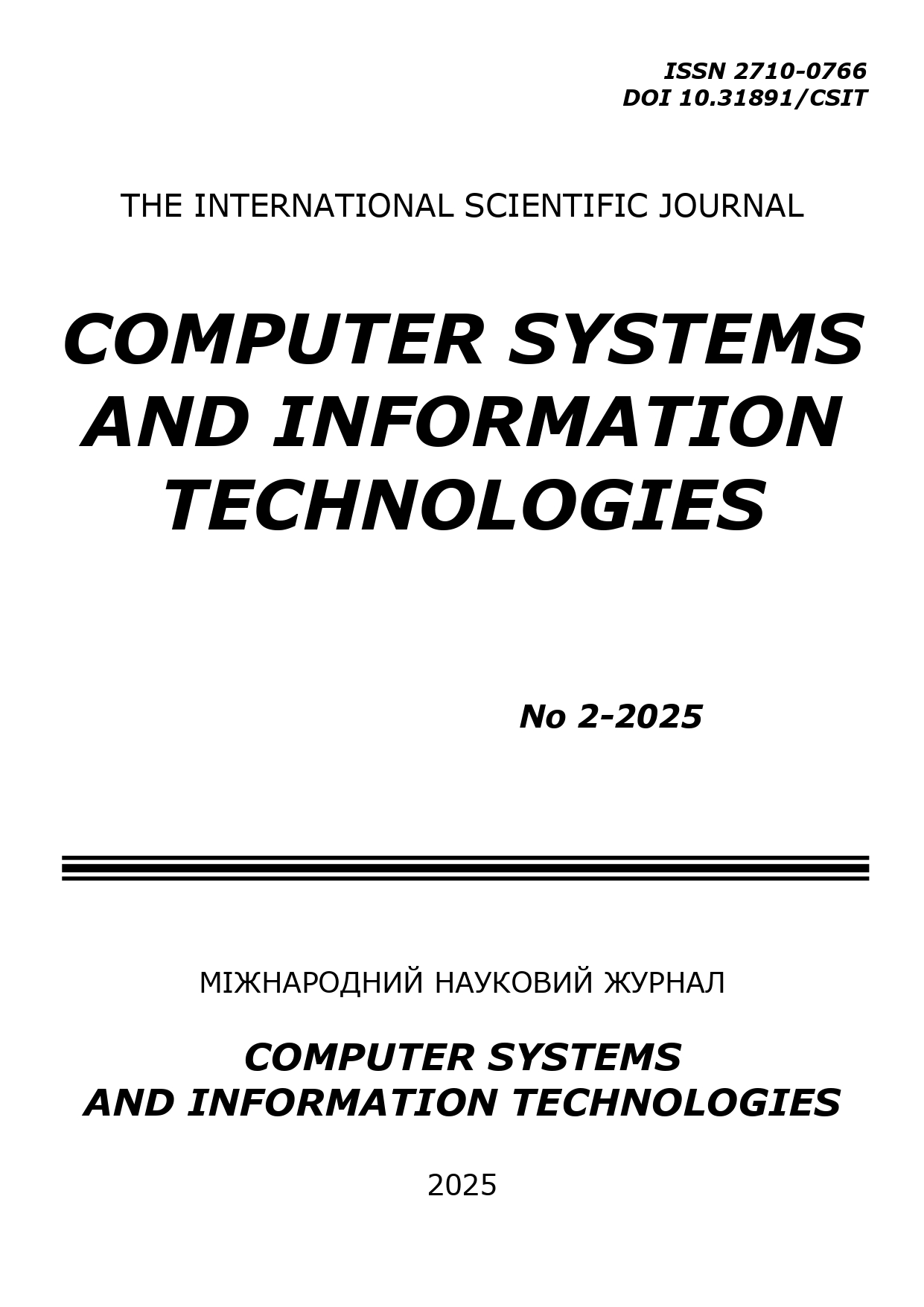ІНФОРМАЦІЙНА ТЕХНОЛОГІЯ АНАЛІЗУ ЕЛЕКТРОКАРДІОСИГНАЛІВ НА ОСНОВІ МАТЕМАТИЧНИХ МОДЕЛЕЙ ЧАСОВОЇ ТА АМПЛІТУДНОЇ ВАРІАБЕЛЬНОСТІ
DOI:
https://doi.org/10.31891/csit-2025-2-4Ключові слова:
класифікація сигналів, моделювання електрокардіосигналів, штучний інтелект (AI), модель, система машинного навчання (MLS), аналіз, нейронна мережа, діагностика, алгоритм, циклічний дискретний випадковий процес, амплітудно-часові характеристики, аналіз кардіосигналів, математичне моделювання, часова функція ритму, кардіодіагностика, амплітудна варіабельністьАнотація
В роботі представлено інформаційну технологію аналізу електрокардіосигналів на основі дискретних математичних моделей з функціями часового ритму та амплітудної варіабельності характеристичних зубців P, Q, R, S, T. Розроблено дискретну математичну модель часової функції ритму з урахуванням екстремальних амплітудних значень характеристичних зубців ЕКС та модель амплітудної варіабельності для комплексного аналізу морфологічних і ритмічних діагностичних ознак кардіосигналів. Експериментальна перевірка проведена на ЕКС пацієнтів з діагнозами: умовна норма та екстрасистолія. Для пацієнтів з умовною нормою спостерігається висока стабільність часових інтервалів між характеристичними зубцями ЕКС з математичним сподіванням 0,776 с для всіх типів зубців та мінімальною амплітудною варіабельністю (математичне сподівання 0,00003-0,00064 мВ, дисперсія 0,00010-0,00022 мВ). У пацієнтів з екстрасистолією виявлено значну нерегулярність серцевого ритму з зменшенням математичного сподівання до 0,503-0,504 с (на 35%) та зростанням дисперсії на три порядки (до 0,011-0,012 с) для функцій часового ритму. Функція амплітудної варіабельності продемонструвала значне зростання всіх статистичних показників: математичне сподівання збільшилось до 0,070-0,452 мВ (від 233 до 15067 разів), дисперсія досягла екстремальних значень 78,44-719,20 мВ (збільшення на 5-6 порядків), розмах варіював у межах 46,2-122,9 мВ (збільшення від 960 до 1500 разів). Запропоновані дискретні математичні моделі успішно поєднують часові функції ритму з урахуванням екстремальних амплітудних значень характеристичних зубців ЕКС з функціями амплітудної варіабельності, дозволяючи комплексно оцінювати як ритмічні, так і морфологічні особливості ЕКС. Моделі демонструють високу чутливість до патологічних змін серцево-судинної системи та розширюють методологічну базу для розробки інформаційної технології експертного аналізу морфологічних та ритмічних ознак кардіосигналів шляхом інтеграції з методами машинного навчання та штучного інтелекту.
##submission.downloads##
Опубліковано
Як цитувати
Номер
Розділ
Ліцензія
Авторське право (c) 2025 Любомир МОСІЙ, Андрій СВЕРСТЮК

Ця робота ліцензується відповідно до Creative Commons Attribution 4.0 International License.

